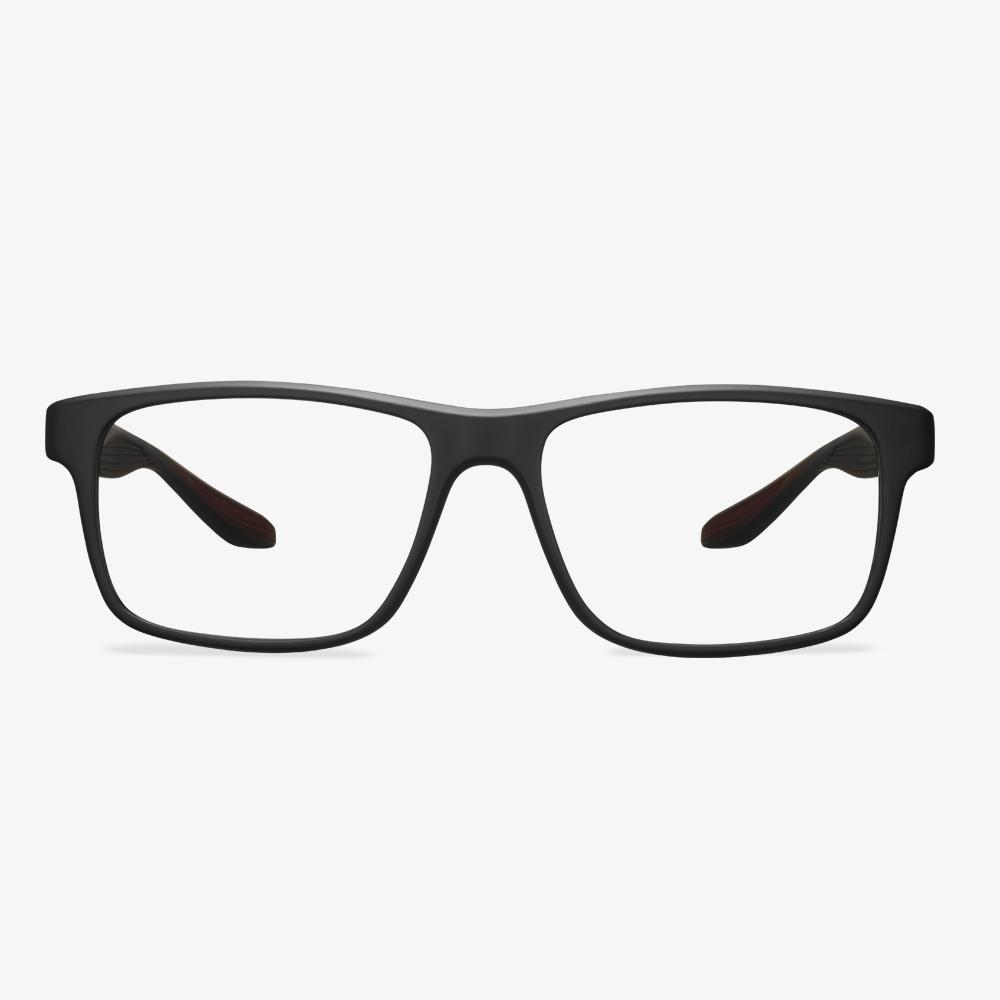What's the difference between optical frames and normal frame?
The optical frame is used in optical products, but decorative glasses and fashion frames are not in this category. Optical glasses require even treatment of lens pressure, so the inner wall should be even and smooth. Optical glasses require high levels of ergonomics, lens angle, and so on. The optical frame material is more consistent with the structure of the human body. It is more comfortable to wear without side effects.
Tungsten Carbon Steel Spectacle Frame
Tungsten-carbon steel is an upgraded version of TR90. Its characteristics are basically lighter, softer, and higher in hardness than the original TR90. It is said to be the material softer than water, lighter than paper, and harder than steel. Tungsten-carbon materials are also called yellow materials in the glasses industry, and the terms of tungsten-carbon plastic are only for consumers because consumers do not know what they mean.
In terms of raw materials, titanium is the most expensive material, and the value of raw materials determines the final retail price of the glasses. The cost of tungsten carbon is slightly higher than the price of TR90 by about 20%, which is about the same as the value of low-end alloy glasses. The cost and value of pure titanium are 3 to 4 times that of TR90 and low-end alloy glasses, so the basic price difference between a pair of brand new pure titanium glasses and TR90 glasses is very large.
Rimless glasses
The too apparent frame will be distracting. Rimless or light-framed glasses are the least visible, avoiding stealing the wearer's thunder, and look more mature, which is why many business leaders wear rimless glasses. For those with low levels of self-deprecation or obvious shortcomings, wearing glasses may be a plus.
How do you buy prescription glasses on GlassesUSA?
Fill out a form on their website to enter a prescription, choose to have them follow up and require it later, or use their prescription scanner app on an existing pair of glasses. However, the app isn't always easy to use. You'll need your phone, a computer with enabled cookies, your glasses, and a magnetic stripe card to determine the size.
Different types of nose pads for glasses
The fixed nose pad is usually used on the plate frame. The nose pad and the frame form an organic whole. The maintenance is more convenient, unlike the movable type that should often twist a screw. It is not easy to hide dirt and dirt. But the disadvantage is that the angle of the nose pad can not be adjusted, and it can not fit the bridge of the nose greatly. The movable nose pad can be automatically adjusted up and down according to the shape of the bridge of the nose to ensure that the compression part of the bridge of the nose is evenly stressed and the local pressure is reduced. But the disadvantage is to often check the tightness of the screw, but often scrub clean. The silicone material usually used in the nose pad is easy to yellow after a long time, which affects the appearance.
The birth of progressive lenses
In 1907, British optometrist Owen Aves first proposed the concept of progressive lenses and got the first patent of progressive lenses. In 1910, Henry Orford Gowlland designed and made a similar lens in Canada, but technical limitations prevented it from succeeding. In 1959, Bernard Maitenaz, a French optical and mechanical engineer, developed the first progressive lens, which was successfully put into the commercial market for the first time and became a milestone in the history of world optometry. With the development of science and technology, the design of progressive lenses has been greatly developed.
How to know your face shape to choose glasses?
To determine your face shape and spectacle styles that will look best on you, pull your hair away from your face and look directly into a mirror. Look closely at your face and head. You need to measure your forehead width, cheekbone width, jawline width and face length.
After measuring, you need to consider your facial features. There are a few characteristics tied to specific face shapes. For example, a rounder jawline is typically tied to a rounder face shape, a pointed chin is closely related to a heart-shaped face. And you need to take note of the angles and contours of your face to see they are soft or sharp or pronounced or not.
Then you can check whether you have a round shape face, squared face or others.
Round face shape: the forehead round at the hairline; the width of your face is the same as the length; the jawline round with very subtle angles, and the length of your face is the same as the width.
Square face shape: the hairline follows a straight line; there are minimal curves to your cheekbones; you would have a strong and squared jawline.
Diamond face shape: the width of your face is smaller than the width of your cheekbones; the cheekbones significantly wider than your forehead and jawline; you may have a narrow chin area; the length of your face is the same as the width.
There are also other face shapes. You can click here to know more.











































